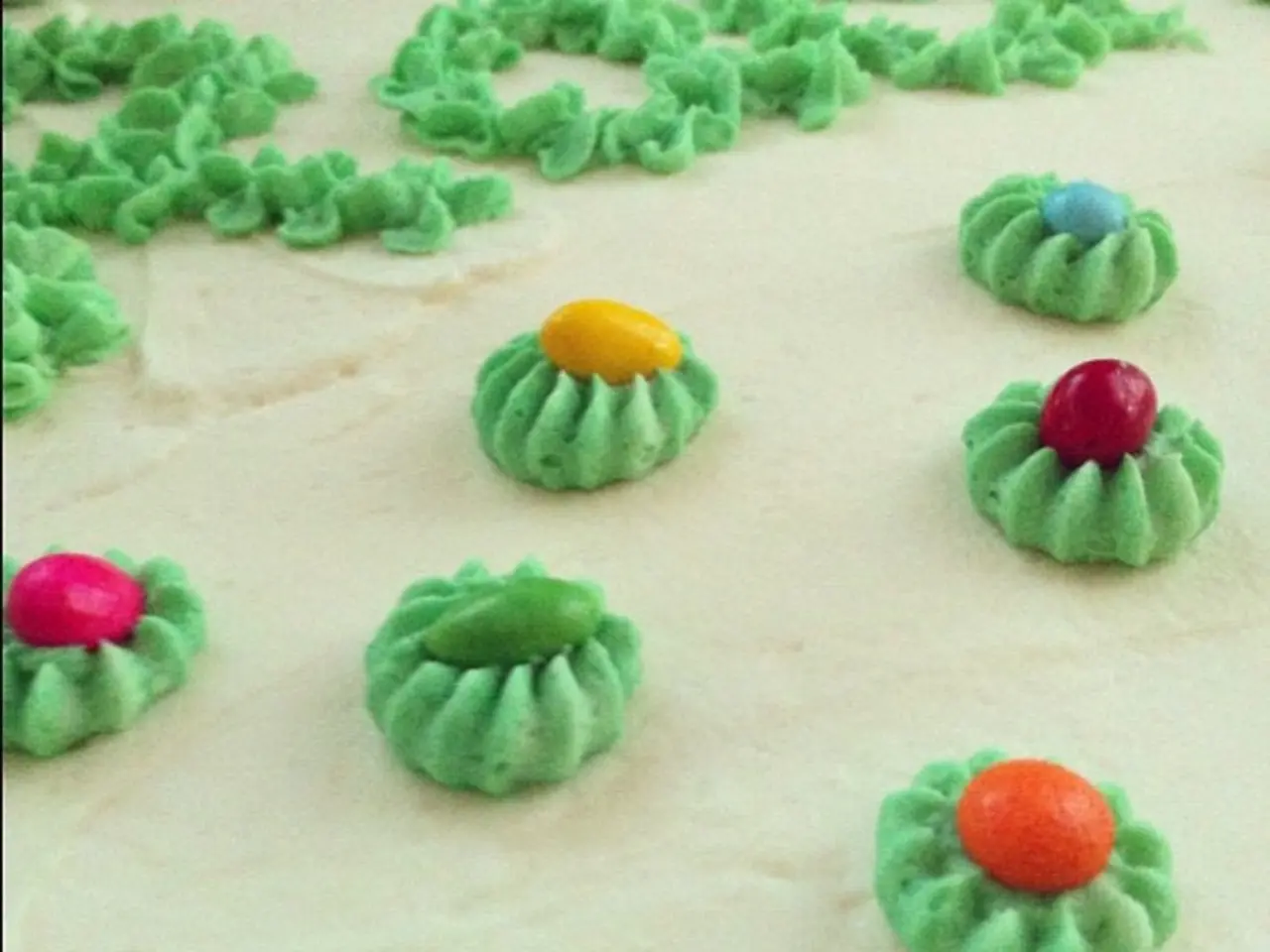Rosacea's Identity: An Explanation
Rosacea is a common skin condition that primarily affects the face, causing symptoms such as facial redness, visible blood vessels, acne-like bumps, thickened skin, and eye irritation [1]. This condition, which can occur in anyone, is most frequently seen in fair-skinned individuals and tends to affect adults between the ages of 30 and 50 [6].
While there is no cure for rosacea, various options can help control symptoms and improve skin appearance. Effective home remedies for managing rosacea symptoms include a combination of lifestyle adjustments, careful skincare, and natural topical treatments.
Identifying and avoiding personal triggers is crucial for managing rosacea effectively. Common triggers for flare-ups include spicy foods, alcohol, hot beverages, extreme temperatures, stress, and certain skincare products or cosmetics. Keeping a diary to track flare-ups can help identify personal triggers [2][5].
Stress management techniques like deep breathing, meditation, yoga, and ensuring regular sleep and hydration can help manage stress levels and reduce rosacea flare-ups [1][5]. Incorporating stress-reducing activities into daily life can be beneficial for those living with rosacea.
Gentle skincare routines are essential in managing rosacea. Mild, soap-free, non-comedogenic, and fragrance-free cleansers and moisturizers are recommended to avoid irritation. Avoid scrubs, alcohol-based toners, and exfoliants [2][5].
Sun protection is crucial in preventing UV-induced flares. Regularly applying broad-spectrum sunscreen with SPF 30 or higher is advised [1][2][3][5].
Natural topical remedies can provide relief for rosacea sufferers. Aloe vera gel, for instance, moisturizes and soothes skin but requires patch testing due to possible sensitivity [1]. Green tea compresses (using cooled brewed green tea) can reduce redness and inflammation due to its antioxidant epigallocatechin gallate (EGCG), which also provides some UV protection [1][3][4]. Oatmeal and raw honey are calming agents with anti-inflammatory properties [1]. Other herbal extracts like chamomile, comfrey, feverfew, and turmeric have been cited but should be used cautiously and discussed with a healthcare provider [1].
While these remedies can help reduce redness, inflammation, and the frequency of rosacea flare-ups, they should be integrated cautiously alongside professional diagnosis and treatment. Consulting a dermatologist before trying new remedies is important to ensure appropriateness for your skin and condition severity [1][2].
For those struggling with persistent redness or visible blood vessels, laser therapy or light treatments can be effective. Options include pulsed dye laser and intense pulsed light (IPL) [3].
Connecting with others who have rosacea can provide emotional support and practical advice. Understanding this condition is crucial for effective management and treatment [7].
If you experience persistent redness, irritation, or if your symptoms worsen, it is advisable to consult a healthcare professional for a proper diagnosis and treatment plan [4]. In rare cases, oral medications like antibiotics such as doxycycline or tetracycline, and in rare cases, isotretinoin, may be prescribed for severe rosacea cases [5].
Rosacea can also affect the eyes, causing irritation and redness (Ocular Rosacea) [6]. In such cases, seeking medical advice is essential.
In summary, a combination of avoiding triggers, gentle skin care, sun protection, stress reduction, and some natural topical agents like green tea and aloe vera are effective home strategies for rosacea symptom management. Consulting a dermatologist for a proper diagnosis and treatment plan is crucial for effective management of rosacea.
References:
[1] American Academy of Dermatology. (n.d.). Rosacea: Self-Care. Retrieved from https://www.aad.org/public/diseases/rosacea/self-care
[2] Mayo Clinic. (2020, December 16). Rosacea. Retrieved from https://www.mayoclinic.org/diseases-conditions/rosacea/symptoms-causes/syc-20352892
[3] National Rosacea Society. (n.d.). Rosacea. Retrieved from https://www.rosacea.org/patients/managing/overview
[4] National Rosacea Society. (n.d.). Consulting a Dermatologist. Retrieved from https://www.rosacea.org/patients/managing/consulting
[5] National Rosacea Society. (n.d.). Triggers and Causes. Retrieved from https://www.rosacea.org/patients/managing/triggers
[6] National Rosacea Society. (n.d.). Rosacea Subtypes. Retrieved from https://www.rosacea.org/patients/types
[7] National Rosacea Society. (n.d.). Support Groups. Retrieved from https://www.rosacea.org/patients/support-groups
Maintaining good health and wellness, particularly skin care, is vital for managing chronic diseases like rosacea. This can involve not only gentle skincare routines with mild, soap-free, non-comedogenic, and fragrance-free products, but also the use of natural topical remedies such as aloe vera gel, green tea compresses, and oatmeal to soothe and moisturize the skin. Additionally, understanding medical-conditions like rosacea and its associated triggers like stress and certain skin-care products is essential for effective self-care and management.




